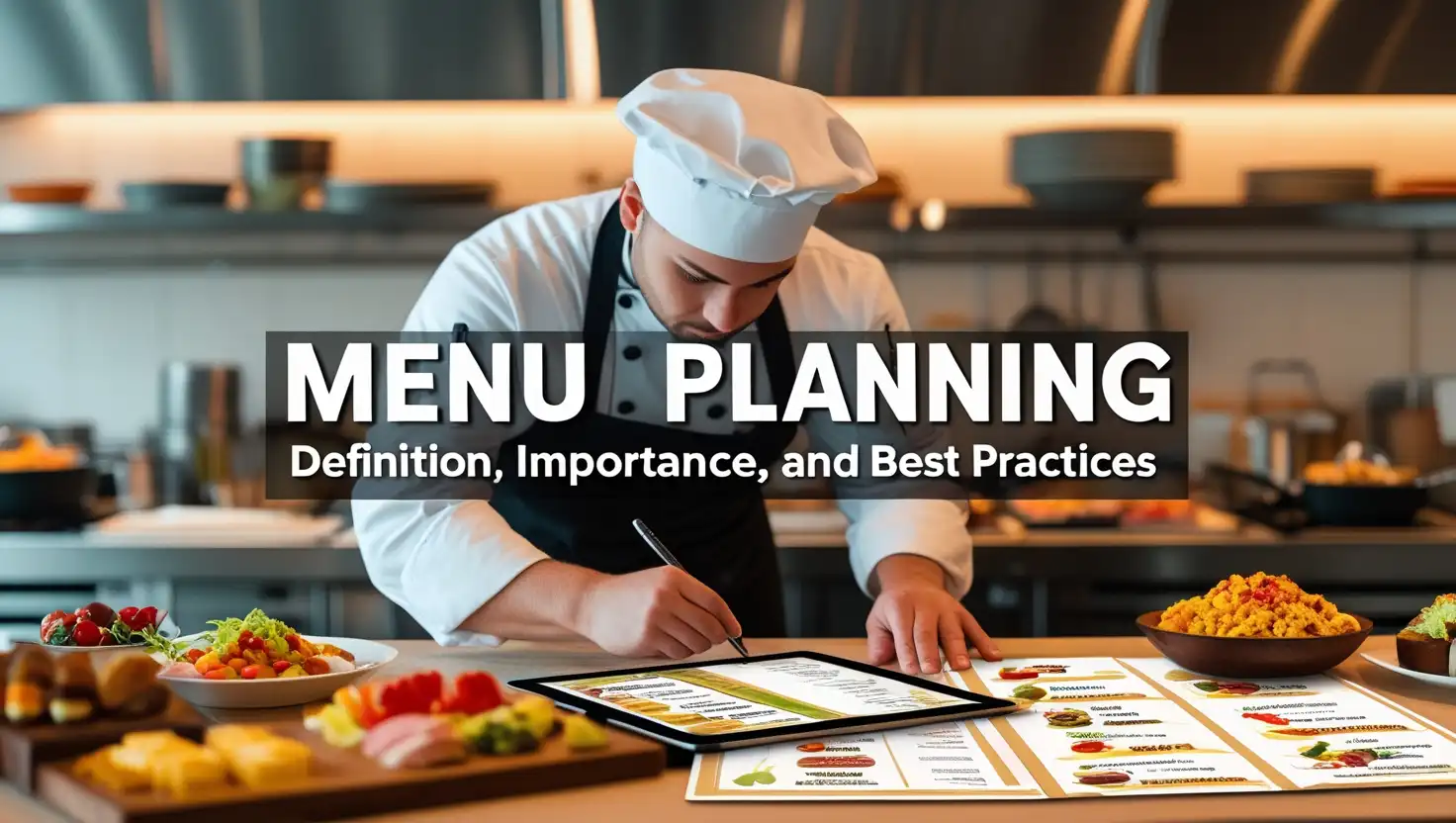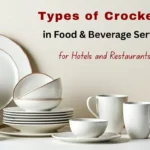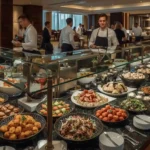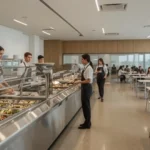Menu planning is the strategic process of designing a list of dishes and beverages offered by a food and beverage establishment. It plays a pivotal role in shaping the dining experience, optimizing operations, and driving profitability.
Whether you’re managing a fine-dining restaurant, a casual café, or an institutional kitchen, an effective menu aligns customer expectations with operational capabilities. This guide explores the principles, steps, and tools for crafting a well-thought-out menu that satisfies both the palate and the bottom line.
What is Menu Planning?
Menu planning is the deliberate process of organizing and designing the dishes and beverages that an establishment offers. It considers customer preferences, dietary needs, operational efficiency, and financial objectives. A successful menu is a blueprint for delivering a delightful dining experience while ensuring smooth operations and profitability.
Importance of Menu Planning in Food Service
- Enhances Customer Satisfaction:
- Addresses diverse dietary preferences and nutritional needs.
- Improves customer experience with well-balanced and appealing choices.
- Streamlines Operations:
- Simplifies kitchen workflows and inventory management.
- Ensures consistent portion sizes and quality.
- Boosts Profitability:
- Encourages sales of high-margin items.
- Minimizes food waste and maximizes resource utilization.
- Reinforces Brand Identity:
- Reflects the theme and personality of the establishment.
- Builds a unique competitive edge in the market.
Explore More: Check out our related posts on A la carte menu, meaning, characteristics, advantage and disadvantage
Menu Planning Considerations
- Target Audience:
- Understand demographics, preferences, and local cultural influences.
- Consider dietary trends like veganism or keto diets.
- Seasonality and Ingredient Availability:
- Leverage fresh, seasonal, and locally available ingredients.
- Adapt menus based on ingredient costs and market availability.
- Operational Capabilities:
- Assess kitchen equipment, staff expertise, and space limitations.
- Ensure that the menu aligns with the kitchen’s capacity to execute efficiently.
- Cost and Budgeting:
- Calculate food costs to maintain profitability.
- Balance premium and affordable offerings to cater to diverse customer bases.
- Menu Design and Layout:
- Use appealing visuals and organized sections (e.g., appetizers, mains, desserts).
- Highlight signature dishes and specials.
Objectives of Menu Planning
- Meeting Customer Preferences and Dietary Needs: Understanding what your customers want ensures repeat business and customer loyalty.
- Ensuring Operational Efficiency: A well-planned menu streamlines kitchen operations, inventory management, and staff training.
- Maximizing Profitability: Thoughtfully designed menus encourage the sale of high-margin items and minimize food waste.
- Supporting Brand Identity and Theme: Your menu reflects the personality and theme of your establishment, reinforcing your brand identity.
Key Principles of Menu Planning
- Balance: Ensure a mix of flavors (sweet, savory, sour, bitter), textures (crunchy, creamy, tender), colors, and plating styles.
- Variety: Incorporate seasonal ingredients, diverse cuisines, and varied cooking techniques to keep offerings fresh and exciting.
- Nutrition and Dietary Considerations: Include options for different dietary needs such as vegetarian, vegan, gluten-free, or low-calorie items.
- Cost Control and Budget Alignment: Design menus that align with food cost budgets and pricing strategies.
Explore More: Check out our related posts onTable d’hôte menu, meaning, characteristics, advantage and disadvantage
Steps in Menu Planning
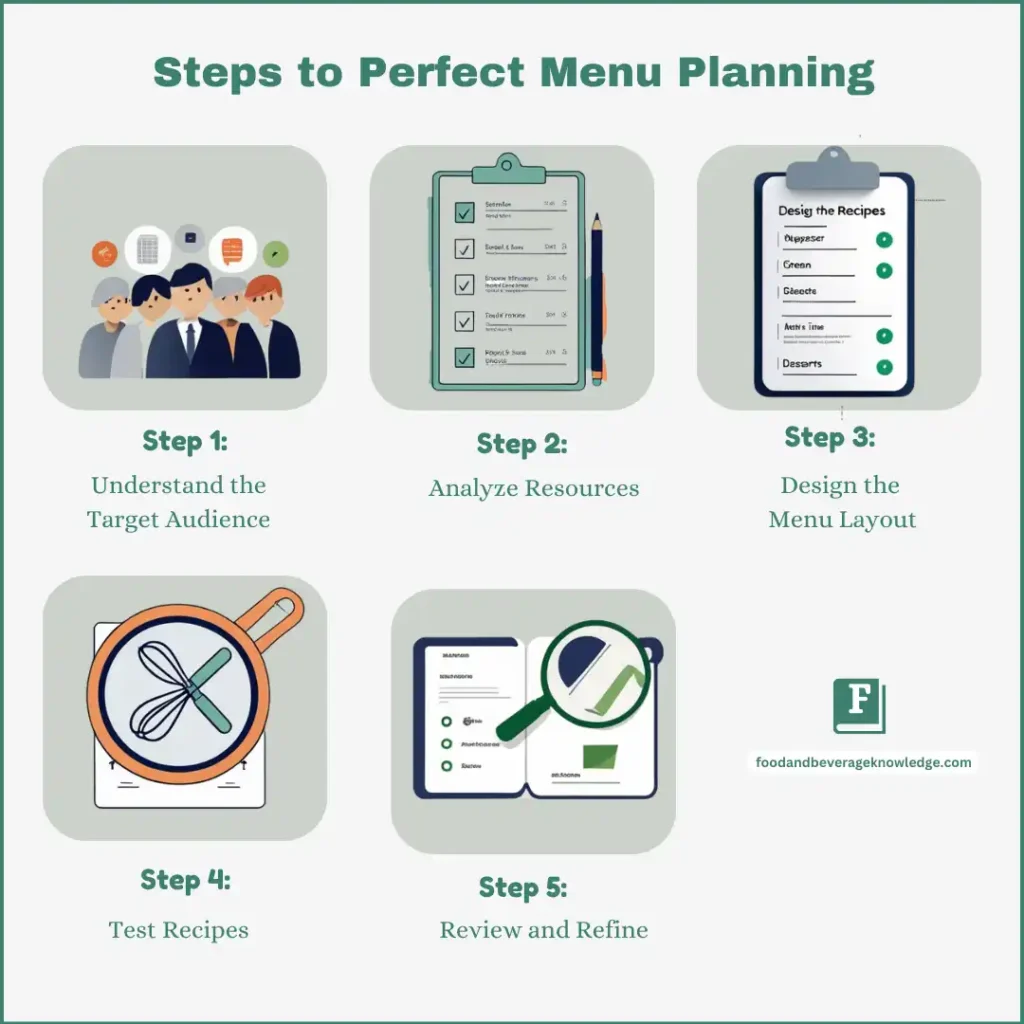
- Understanding the Target Audience:
- Conduct market research to identify customer demographics, preferences, and dining trends.
- Consider cultural influences and regional tastes.
- Analyzing Resources:
- Assess kitchen equipment, ingredient availability, and staff capabilities.
- Evaluate supplier reliability for consistent ingredient supply.
- Designing the Menu Layout:
- Organize categories (appetizers, mains, desserts) logically.
- Use strategic placement for high-margin items (menu engineering).
- Testing Recipes:
- Standardize recipes to ensure consistent quality and portion sizes.
- Conduct tasting sessions to gather feedback from staff and customers.
- Review and Refinement:
- Use sales data and customer feedback to adjust the menu periodically.
- Eliminate underperforming items and introduce seasonal specials.
Types of Menus in Menu Planning
- À la Carte Menu:
- Features individually priced items.
- Offers flexibility for customers but requires careful portion and inventory management.
- Table d’Hôte Menu:
- Provides a set menu at a fixed price.
- Ideal for formal events and banquets, ensuring predictable costs.
- Buffet Menu:
- Displays a variety of self-serve dishes.
- Suitable for large gatherings and minimizes staffing needs.
- Cycle Menus:
- Rotates on a regular schedule, commonly used in schools, hospitals, and corporate cafeterias.
Tools and Techniques for Effective Menu Planning
- Software Tools:
- Use menu engineering software to analyze sales data and profit margins.
- Employ design tools for creating visually appealing menus.
- Customer Feedback:
- Leverage surveys, online reviews, and direct feedback for improvement.
- Menu Engineering:
- Identify stars (popular and high-margin items) and plowhorses (popular but low-margin items) to optimize the menu.
Common Mistakes to Avoid in Menu Planning
- Overcomplicating the Menu:
- Too many choices can overwhelm customers and strain kitchen operations.
- Ignoring Customer Feedback:
- Regularly update the menu based on what customers want and dislike.
- Inconsistent Portion Sizes and Pricing Errors:
- Standardize recipes to avoid customer dissatisfaction and revenue loss.
- Failing to Update the Menu Regularly:
- Outdated menus can lose relevance and fail to capture interest.
Explore More: Check out our related posts on17 Course French Classical Menu with Examples & Description
Conclusion
Menu planning is both an art and a science, requiring a balance between creativity, customer satisfaction, and operational efficiency. A well-designed menu not only enhances the dining experience but also drives profitability and strengthens your brand identity. By following the outlined principles and steps, you can craft a menu that delights customers and achieves business goals.
FAQs of menu planning
What is menu planning, and why is it important?
Menu planning designs a menu to meet customer needs, streamline operations, and boost profits.
What are the main objectives of menu planning?
Key goals are satisfying customers, improving efficiency, increasing profits, and supporting brand identity.
What factors should be considered in menu planning?
Consider customer needs, seasonal ingredients, budget, kitchen resources, and food trends.
How does menu planning help control costs?
It reduces waste, standardizes portions, and promotes high-margin items.
Subscribe and join our community of hospitality professionals & students — get insights, tips, and the latest updates delivered straight to your inbox!

